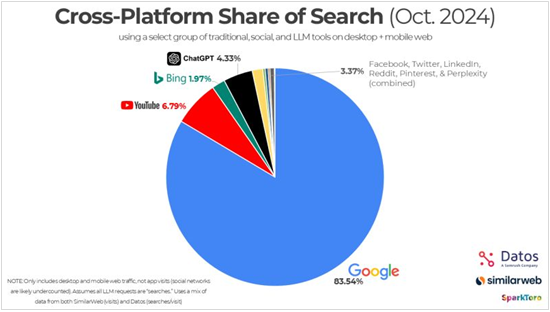1st October 2025
BlogAccelerating with intelligence; a new era of AI optimisation, and a new raft of things to consider, in healthcare marketing
Rachael McLoughlin, Experience Director
With a new prophecy around the impact that AI will, or won’t, have on the world of healthcare marketing, popping up almost daily on newsfeeds everywhere, Lynx CX are tracking the rapidly changing marketing landscape with real interest – it’s such an exciting time, with generative AI meaning new opportunities to explore, new challenges to navigate, and new power and potential to harness; to change healthcare experiences for the better.
To start with an obvious point – AI has been used in our industry for years. Algorithms have supported research and development and accelerated molecule discovery as a fundamental cornerstone of the drug development process for a long period of time; we’ve all just been less interested in AI’s less ‘generative’ forms.
Before large level language models (LLMs), AI was largely reserved for the specialist and the niche use case. Now, AI has truly captured the public imagination because, well… it feels much more sentient and sexier than what came before.
Compounding that, a lower barrier to entry has levelled the playing field and brought LLMs and their potential to the masses. This means what was once black box, obfuscated technology applied in niche corners of the marketing process can now be applied – at speed and scale to almost every part of it with little to no technical understanding.
As the saying goes, “to be everywhere is to be nowhere”. We need to ensure that we’re being considered and stepwise in our approach to applying AI, ensuring due diligence for each process change we make. This is particularly important in heavily regulated industry where rigour is a non-negotiable, and quality and governance is central to what we do.
So the big question is where and when to apply AI to add the most value, solve the biggest problems, and drive the most positive change.
Search Fragmentation and the Rise of LLMs
LLMs have made a big dent into the search landscape, but the picture developing is certainly not as bleak for traditional search as some alarmist commentaries out there might have you believe.
Search as an information-seeking behaviour is fragmenting, and we see Google Search starting to see some credible competition in its rearview from the likes of ChatGPT, Perplexity, Gemini, and even (gasp!) Grok; as well a host of social media-driven search platforms. These alternative platforms occupy a small chunk of the search pie at this stage; but a growing one.
With this we begin to see a shift from a pattern where multiple results are returned (as in traditional search) to the LLM response model where a single summarised ‘answer’ is provided necessitating fiercer competition for visibility. Its worth noting that this isn’t “new news” — we’ve seen this kind of pattern previously utilised by voice apps, smart speakers and feature snippets, where question and answer use case manipulated search and SERPs to provide a similar experience – optimising for this has historically been referred to as ‘answer engine optimisation’ (AEO).
So, voice search has already presented our brands with a shift in authority and control over our brand narratives, and LLMs are now compounding this; for those planning brand experiences, this is a huge opportunity as well as a challenge. We are no longer the sole gatekeepers of our carefully orchestrated brand experience, and with that we must consider the wider footprint that our products and services leave in their wake, and how this is interpreted by machine models.
On the flip, LLMs are a completely new channel which offers us rich territory to explore as part of the marketing mix; our proprietary dataset, Point.1 sees an increasing number of HCPs turning to them for discovery, summary and research purposes; and LLM responses, given the interaction pattern that apes dialogue with a colleague, enjoy a reasonably high level of influence on decision making.
However, not all LLMs are created equal. LLM platform choice is a factor we must also consider in terms of where we focus spend (is your brand more Grok or Perplexity?). We can’t boil the ocean, and competing to be the single answer is undoubtedly harder than competing for a ‘top spot’ among a handful of other results. With that in mind, we must be choiceful and considered in who, and what, we target, and at what stage in our marketing funnel LLMs really come into focus; and where we want to target being visible to realise the most return on our investment.
So in summary – the landscape for healthcare discovery and search is shifting; and shifting rapidly. LLMs are rapidly becoming a discovery tool that our audiences rely upon and frequently engage with. How do we stay visible in this new, fragmented, world of choice? In order for brands to stay visible, remain relevant and to harness this new potential we must focus on optimising our assets with LLM discovery and synthesis in mind – and that’s where Generative Engine Optimisation (GEO) comes in. More on optimisation strategies to follow.
If you fancy a chat, or anything else relating to AI or CX, get in touch cx@havaslynx.com. Or sign up to our webinar on 15th October.

